
On September 23rd (Brazil time), Professor Yu Kongjian, Dean of the School of Architecture and Landscape Architecture at Peking University, tragically died in a plane crash. A world-renowned landscape architect and proponent of the "sponge city" concept, Yu Kongjian designed numerous outstanding landscape works, transforming landscape design from a gardening technique into an "art of survival." Through his lifelong practice, he redefined the relationship between cities and nature.
The outpouring of tributes from people from all walks of life, both domestically and internationally, is not only a tribute to his personal memory but also a tribute to the ecological and humanistic philosophies he championed. Several prominent figures in the architecture and landscape design community, speaking to The Paper today, stated that Yu Kongjian's legacy to Chinese architecture and landscape design is profound: true design empowers nature, perpetuates culture, and reconciles humanity with the land.
"Professor Yu Kongjian is a pioneering scholar in ecological landscape planning and design in China. His academic thoughts and practices have greatly influenced China's architecture, urban and rural planning, and landscape gardening disciplines and fields, and in a certain sense, reversed the academic chaos in the field of landscape gardening." Zhao Chen, professor at the School of Architecture and Urban Planning of Nanjing University, said in an interview with The Paper today.

Yu Kongjian Photo source: China Environmental News
"Few landscape architects have received such widespread attention and recognition internationally, let alone those from China. He has a particularly deep and sincere connection and understanding with the land, and has developed a theory of cities/landscapes and nature that rises to national and global scales," renowned architect Li Hu told The Paper.
Li Hu told The Paper that in the fall of 2023, while he was teaching at Harvard, Yu Kongjian happened to return to the GSD to give a speech. "He was in the United States to receive a very important award, the Cooper Hewitt National Award, which had just been widely reported in the New York Times. At Harvard and later at Peking University after returning to China, we had the opportunity to talk at length and learn more about his ideas. He thinks from the micro to the macro level, and is very clear about making these voices heard by decision makers. In fact, he does have the ability and courage to promote and implement these ideas step by step through various means, media, and projects. His sudden and untimely departure leaves behind a huge unfinished work. It is necessary for those who are deeply concerned about these urgent ecological crises and problems to pick up his courage and continue to push forward."
Yu Kongjian, a Harvard University Ph.D., Dean of the School of Architecture and Landscape Architecture at Peking University, and a member of the American Academy of Arts and Sciences, returned to China in 1997 and has been dedicated to research on national ecological security and urban and rural planning and design. He systematically proposed the concept and method of sponge city construction based on traditional Chinese ecological wisdom, which has been implemented in over 250 cities and promoted worldwide. His achievements have been recognized by the U.S. National Design Award, the Oberlander Prize, and the Sir Jericho Medal, a lifetime achievement award in the world of landscape architecture. He was awarded honorary doctorates by the University of Rome and the Norwegian University of Biological Sciences, and is a Changjiang Scholar Distinguished Professor of the Ministry of Education.
Guided by his "Big Foot Aesthetics" and "Sponge Philosophy," a series of landscape works have emerged across China, blending ecological function with artistic beauty. These works are not only a showcase of technology but also an art of survival. Yu Kongjian's sponge city concept stems from a profound insight into traditional Chinese agricultural wisdom. His research has revealed that China's 5,000 years of rural agriculture and urban development contain a rich legacy of water-adaptive landscapes.
In 2023, Yu Kongjian presented his new book, "The Bigfoot Revolution and the New Utopia," at the Shanghai Library's East Branch. The book explores how to heal the urban trauma of modernity and reshape the human living environment to return to a "Utopia" where heaven, earth, and humans coexist in harmony. He hopes that by practicing Bigfoot aesthetics, he can inspire a shift in people's aesthetic perceptions of cities and nature.
Yu Kongjian's theories and practices have not only had a wide-ranging impact in China but have also garnered international recognition. He has received twelve annual design awards from the American Society of Landscape Architects, including two annual awards of excellence. He has also won the World Architecture Festival's Global Best Landscape Award five times in a row, and three of his designs have received international architecture awards.
In 2021, Yu Kongjian received the Le Corbusier Prize for Common Good, the world's highest award in ecological philosophy and ecological civilization. This is the highest recognition for his application of Chinese wisdom to "healing the planet."
In June 2025, he delivered a speech titled "Return to the Ordinary World" at the Peking University School of Architecture and Landscape Architecture graduation ceremony, proposing a return to common sense and integrity. "The term 'ordinary world' may sound bland, even slightly derogatory, as if it compromises the ordinary and the mediocre. But I tell you, in this era full of challenges—global climate change, urban-rural social transformation, the alternation of civilizations, and especially the rapid development of AI—for those of you who are about to graduate from university, enter society, and enter the real world, these four words precisely represent your most scarce and precious ability. 'Ordinary world' means seeing the land, feeling the smell of the water, hearing the sighs of ordinary farmers, and touching the warmth of the grass roots. It means using your unfiltered intuition, experience, and body to measure the reality of a place, rather than relying solely on models, parameters, satellite imagery, and AI."
On September 23, 2025, Yu Kongjian died in a plane crash while filming the documentary "Sponge Planet" in the Brazilian Pantanal wetlands. He was 62 years old. This scholar, always committed to "healing the earth", completed his final journey of life while studying the global ecology.
Yu Kongjian once said, "We cannot simply use traditional landscape gardening to solve modern problems. Instead, we must apply a new vernacular approach—not just for the elite, as traditional landscape gardening does, nor just for farmers, as ancient vernacular gardening does, but for ordinary people, for everyone."
Today, in Qinhuangdao Tanghe Park, the winding "red ribbon" still dances among the green; in Zhongshan Qijiang Park, weeds grow freely beside the railroad tracks of the old shipyard; in Shanghai Houtan Park, reeds and wild rice stems are still purifying the city's water source.
These projects are not only the material carriers of Yu Kongjian's design concepts, but also the inspiration he left for the future of Chinese landscape design - true design is to let nature do the work, let culture continue, and let people reconcile with the land.
The following are some of Yu Kongjian’s design works compiled by The Paper.
Shanghai Houtan Park: Landscape as a Living System
Houtan Park, part of the 2010 Shanghai World Expo, is a prime example of Yu Kongjian's ecological design. The park established a replicable model for ecological water purification, allowing nature to do the work without requiring extensive human maintenance.
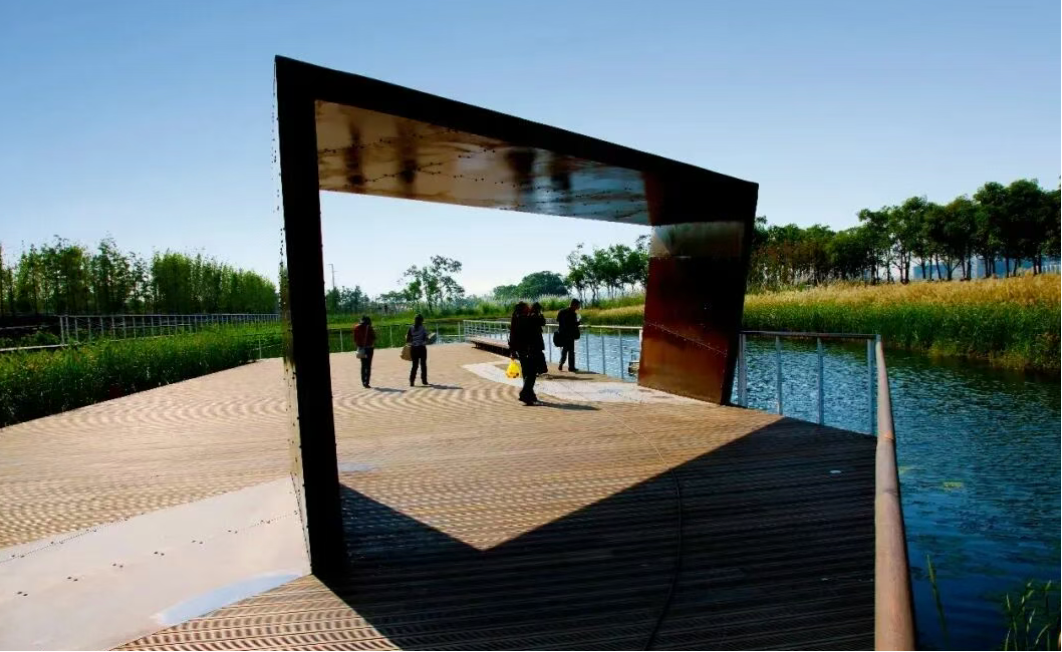
Shanghai Houtan Park
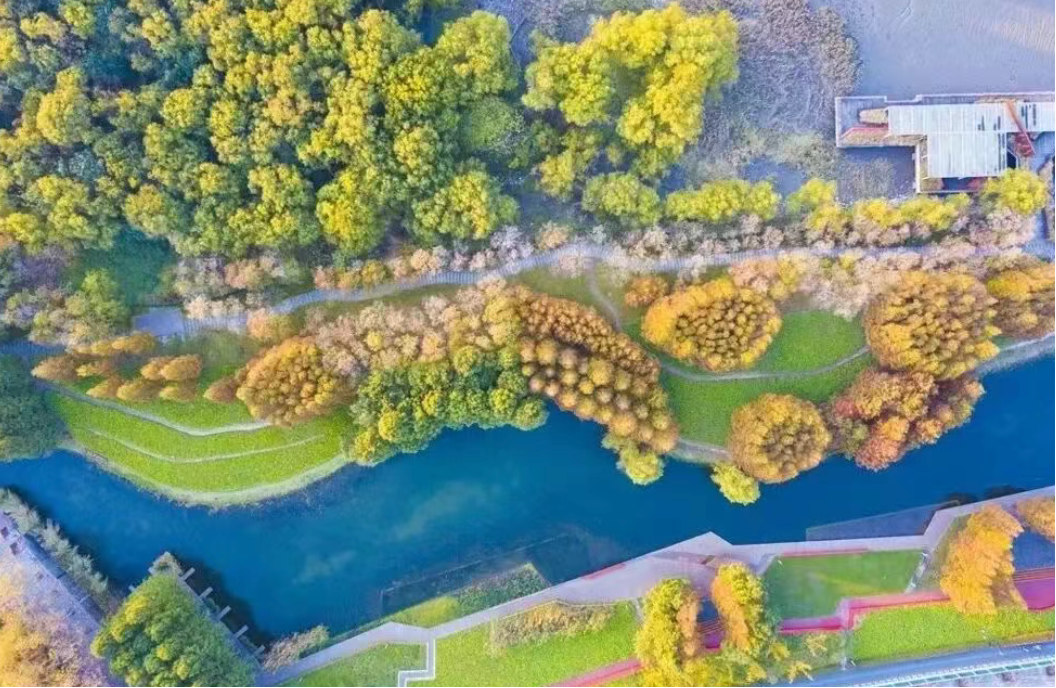
Shanghai Houtan Park (2010)
Relying on the redevelopment of a former steel mill and landfill, the project's core is a one-hectare constructed wetland system, which purifies 800 tons of Class V water from the Huangpu River daily, directly supplying the park's greenery and landscaping. The design looks back to a past of agricultural and industrial civilization while envisioning a future of ecological progress. This project vividly embodies the Expo's motto of "Better City, Better Life."
Zhongshan Qijiang Park: Using recycling technology to purify water

Zhongshan Qijiang Park (2001)
In 2002, Yu Kongjian designed the Zhongshan Qijiang Park, a representative work of his early practice. This project preserved the industrial heritage of an old shipyard, utilized regeneration technology to purify water, and created a unique industrial aesthetic. The design received a 2002 American Society of Landscape Architects Design Honor Award.
Liupanshui Minghu Wetland Park: Slowing down the flow
The Liupanshui Minghu Wetland Park, completed in 2012, successfully implemented the sponge city concept at a regional scale. Faced with severe water pollution and flooding, Yu Kongjian's team proposed a "green sponge" solution.
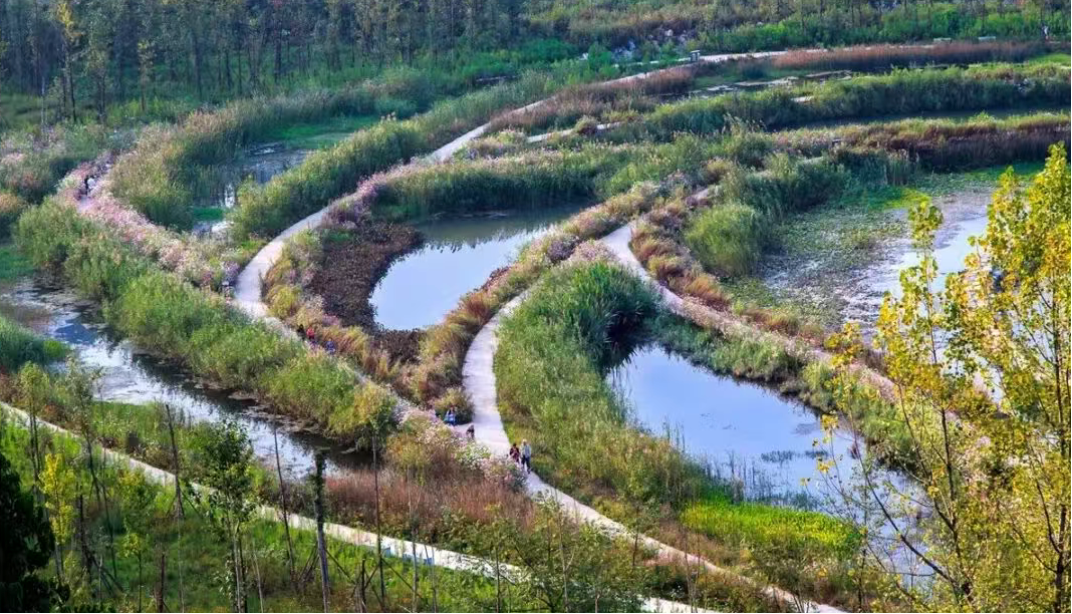
Liupanshui Minghu Wetland Park (2012)
They removed the concrete embankments of the channelized river, restored the natural river banks, and connected the existing streams, ponds and low-lying areas to form a series of reservoirs and purification wetlands with different carrying capacities.
This design not only effectively reduces the risk of urban flooding but also ensures that water flows even during the dry season. A continuous network of public spaces integrates pedestrian and bicycle paths, reconnecting the city with the river.
Harbin Qunli Rainwater Park: A Green Sponge in the City Center
In Harbin's Qunli New District, Yu Kongjian's team transformed a threatened wetland into a 34-hectare rainwater park. This project successfully addressed the new urban area's stormwater drainage and retention issues.
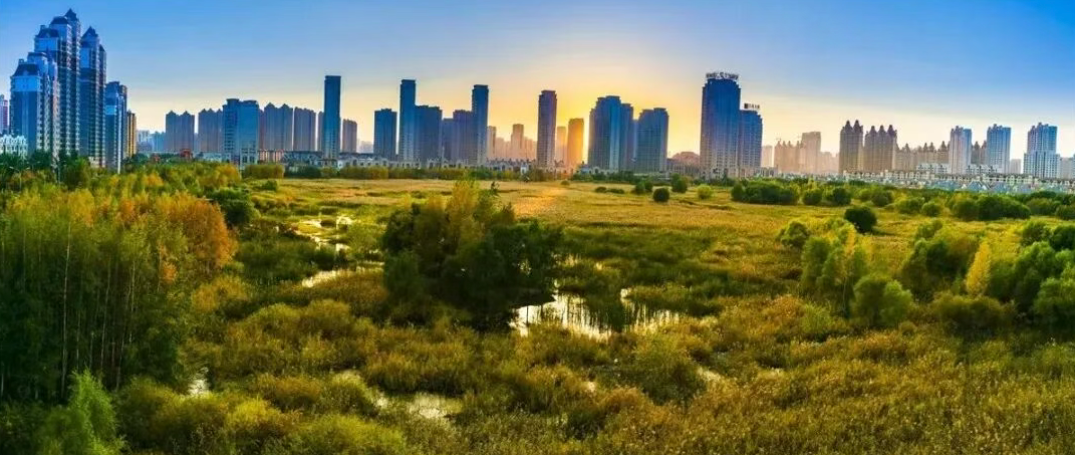
Harbin Qunli Rainwater Wetland Park (2011)
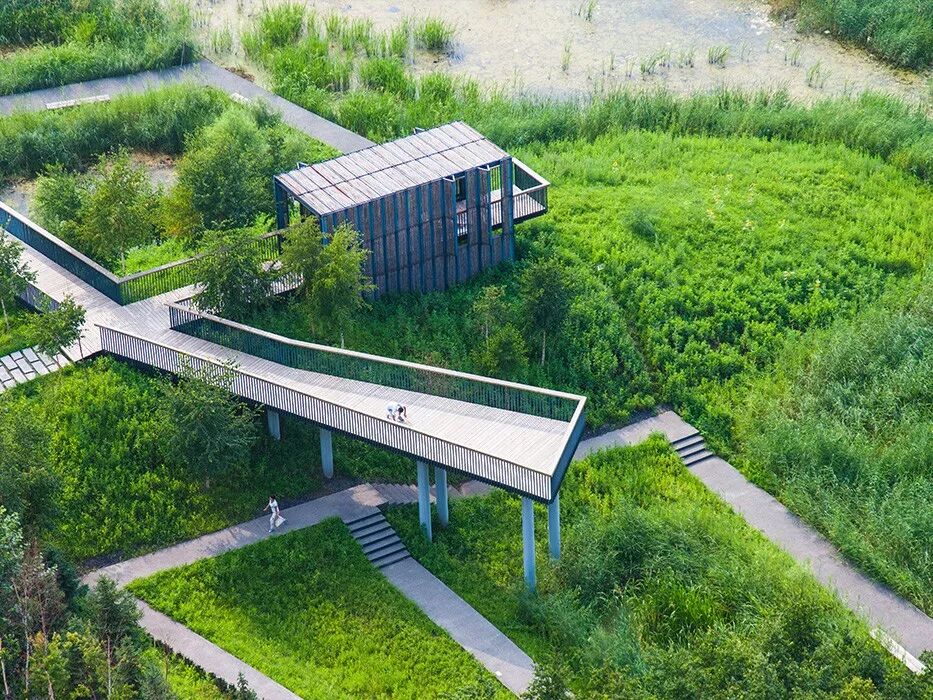
Harbin Qunli National Urban Wetland Park
The design team utilized urban stormwater to restore the wetland system, creating an urban ecological infrastructure with multiple ecological services. The park collects and purifies rainwater while providing valuable recreational space for the city, achieving a perfect combination of stormwater management, ecological protection, and recreational activities.
Jinhua Yanweizhou Park: A Resilient Landscape That's Friendly to Floods
Jinhua Yanweizhou Park, which opened in May 2014, exemplifies the concept of "resilient landscape" design. The park's design incorporates ecological flood control dikes, drought- and flood-adaptive vegetation, and 100% permeable paving.
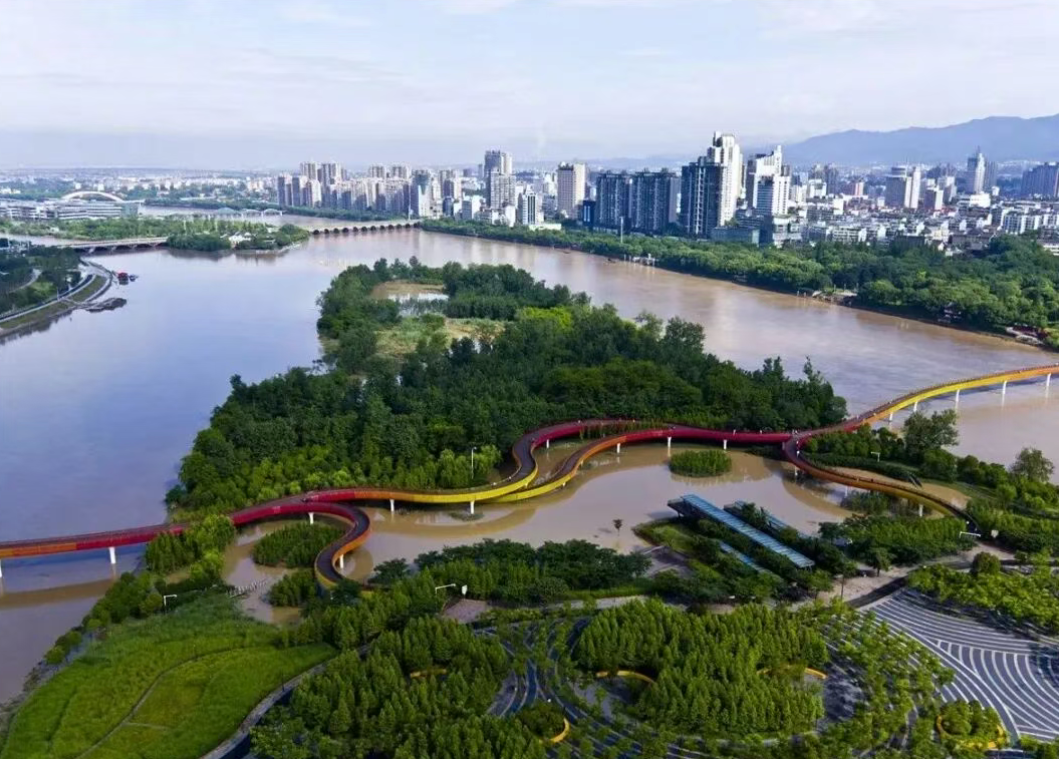
Jinhua Yanweizhou Park (2014)
The most eye-catching thing is that a winding and colorful pedestrian bridge in the park is used by more than 40,000 people every day. It not only solves the problem of crowd evacuation, but also becomes a new business card for Jinhua city.
The design adopts the strategy of “seeing the small within the big”, cleverly transforming the vast space of a large cultural performance venue into a quiet space for daily use by citizens.
Shenyang Jianzhu University Campus: Bringing the Sound of Reading to Rice Fields
At the new campus of Shenyang Jianzhu University, Yu Kongjian made a bold attempt to plant rice on campus. This design won the 2005 American Society of Landscape Architects Design Honor Award.
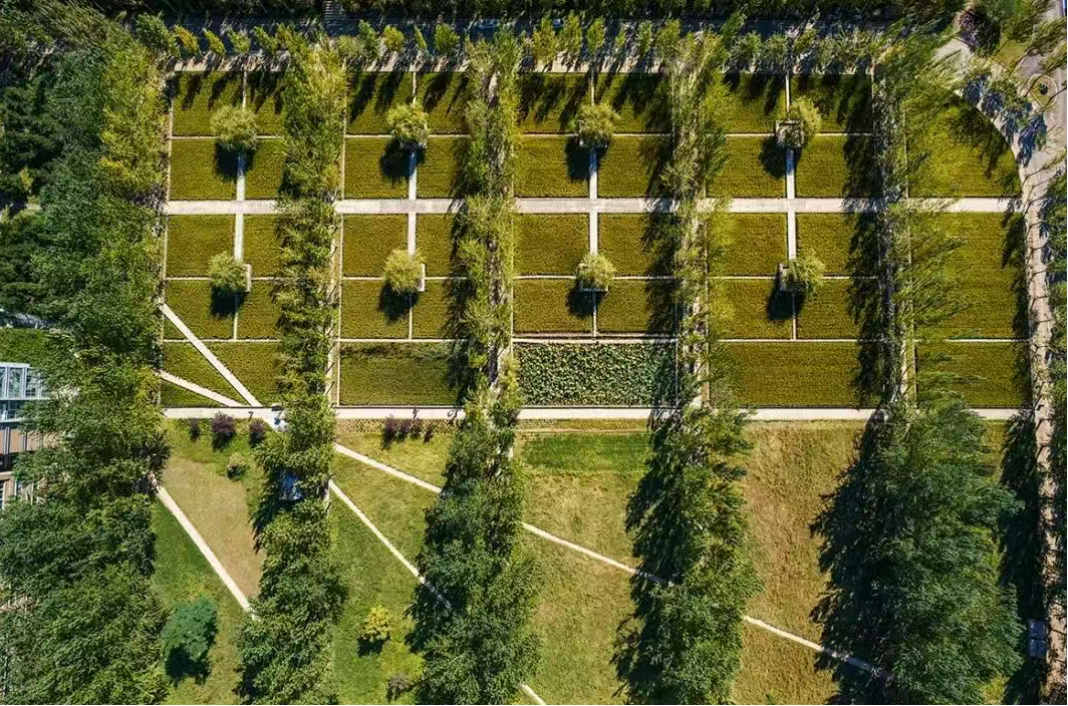
Rice Field Campus of Shenyang Jianzhu University (2004)
The rice field landscape not only reproduces the local agricultural memory, but also collects rainwater for irrigation. In addition, a reading table is set up next to the rice fields, reflecting the traditional "beauty of farming and reading".
This project pioneered the production of campus landscapes, replacing the decorative flowers and plants commonly seen in traditional gardens with ordinary landscapes.
Tianjin Qiaoyuan: Ecosystem service-oriented abandoned land restoration
Tianjin Qiaoyuan, completed in 2008, demonstrates how simple ecological engineering can transform an urban wasteland. This once dirty, squalid urban wasteland was quickly transformed into a multifunctional ecological park with stormwater retention and biodiversity conservation capabilities.
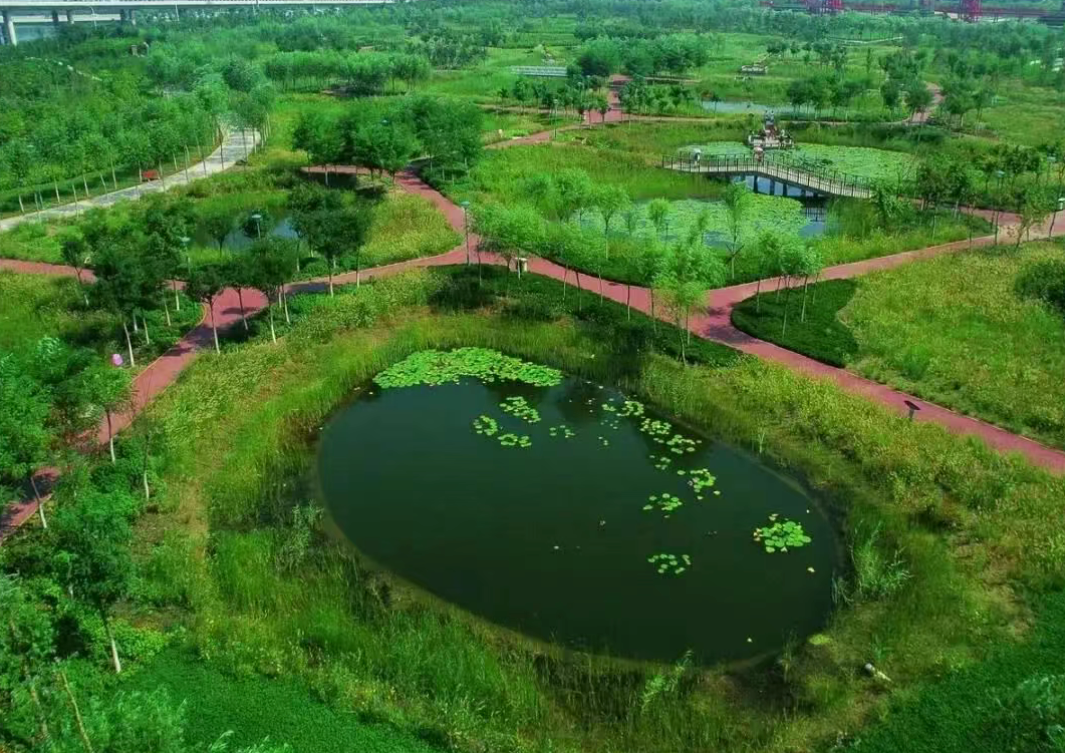
By transforming abandoned kiln pits into "random" plant communities, the site is naturally revitalized through rainwater collection and soil improvement. The preserved kiln ruins and undulating vegetation landscape within the park serve as a model for transforming brownfields into green oases in the city.
The park, with its low construction and management costs, showcases a new environmental ethic and ecological aesthetic to the public. Over 200,000 people visited the park in its first week.
French "Square and Circle": A Contemporary Translation of Traditional Chinese Gardens
In 2013, Yu Kongjian exhibited his work "Square and Circle" at the International Creative Garden Exhibition at Chateau de Chaumont in France. It was the only work from the exhibition that year that was permanently preserved.

The work, with its spatial structure of "square outside and round inside," blends traditional Chinese gardening philosophy with modern ecological techniques. A curving wooden plank path diagonally across a square pond, along with a cluster of upright red bamboo in the water, creates a tranquil and profound atmosphere.
The "Square and Circle" project uses contemporary design language to reinterpret the philosophy, techniques, and experience of traditional Chinese gardens, while incorporating the ecological concept of rainwater utilization.
Landscape revitalization of the Kaban Lakes waterfront in Russia
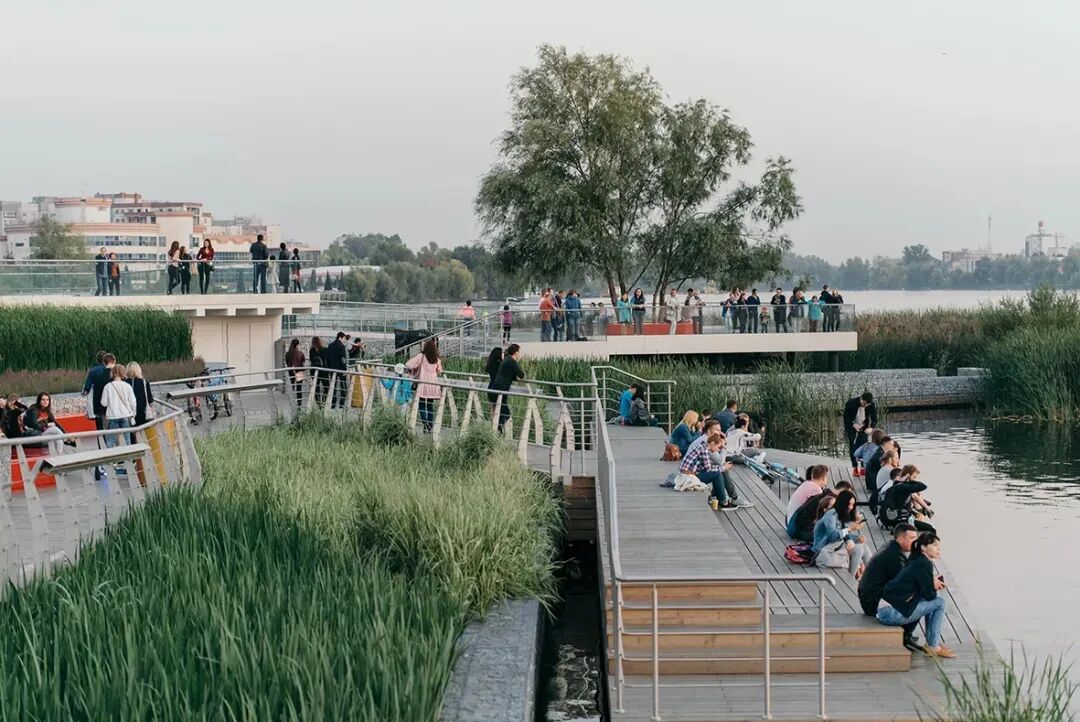
Landscape revitalization of the Kaban Lakes waterfront in Kazan, Russia
The landscape revitalization of the Kaban Lakes waterfront in Kazan, Russia, is a transnational project. Addressing the deteriorating water quality and ecological degradation of the Kaban Lakes, the project restored the lake's ecological function through wetland restoration, revegetation, and waterfront trail design. It also created a public space that incorporates Tatar cultural elements, becoming a model of international ecological cooperation.
【Attached architectural works】
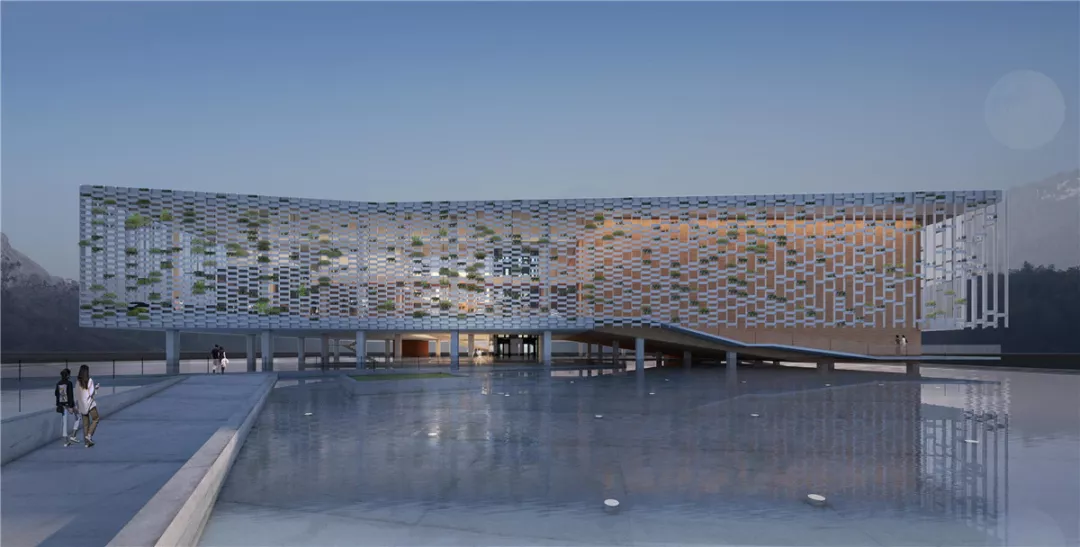
Dongguan Chinese Academy of Sciences Laboratory
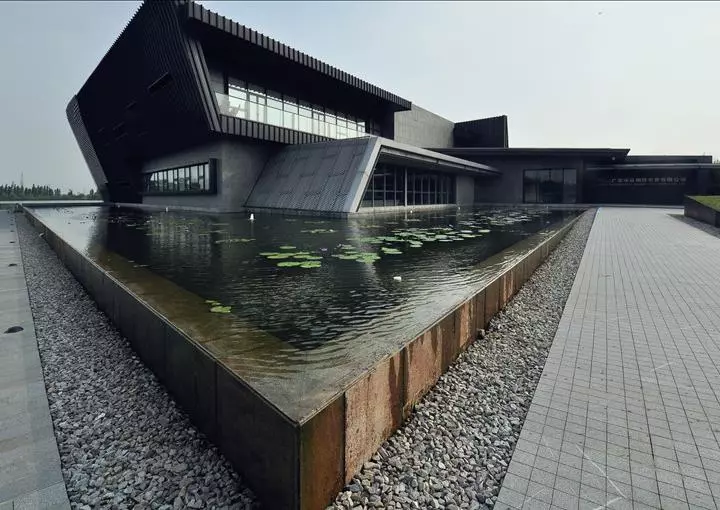
Lecong Steel World Investment Promotion Center
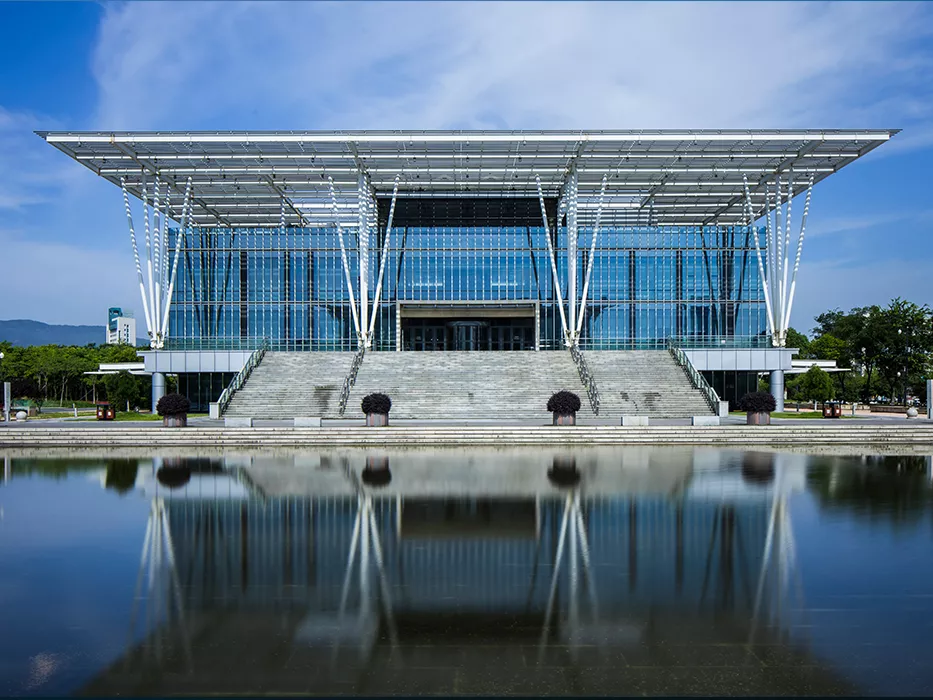
Deqing Cultural Exhibition Center and Library
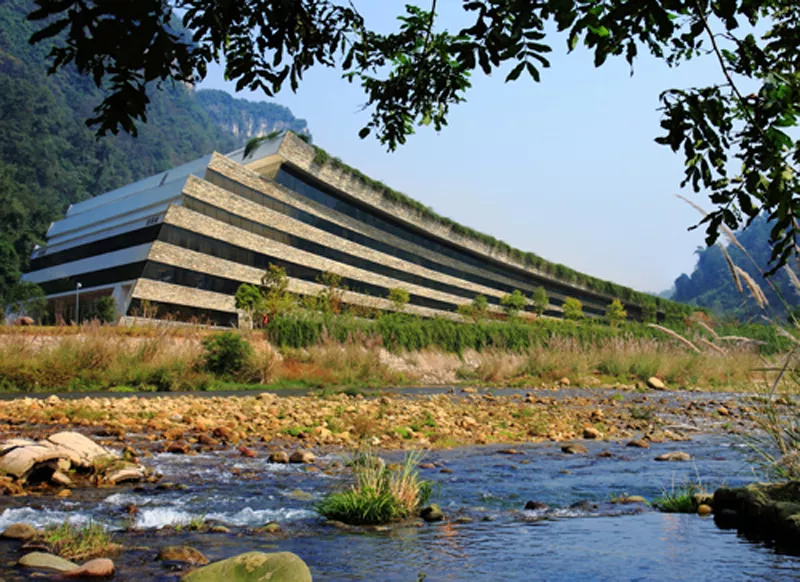
Hallelujah Concert Hall, Huanglong Cave, Zhangjiajie, Hunan
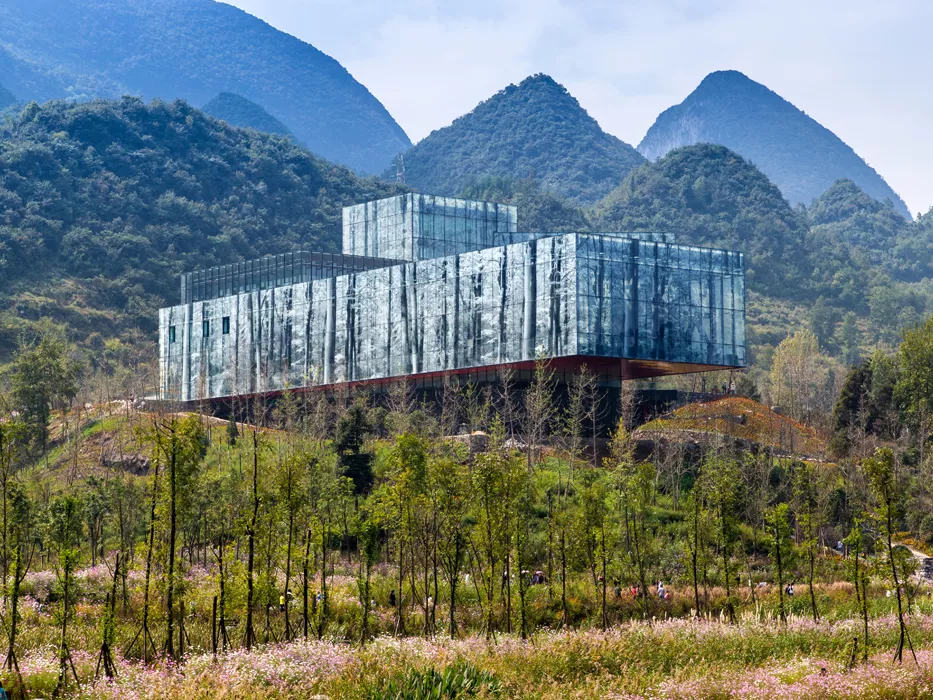
Liupanshui Calligraphy and Painting Academy, Guizhou Province
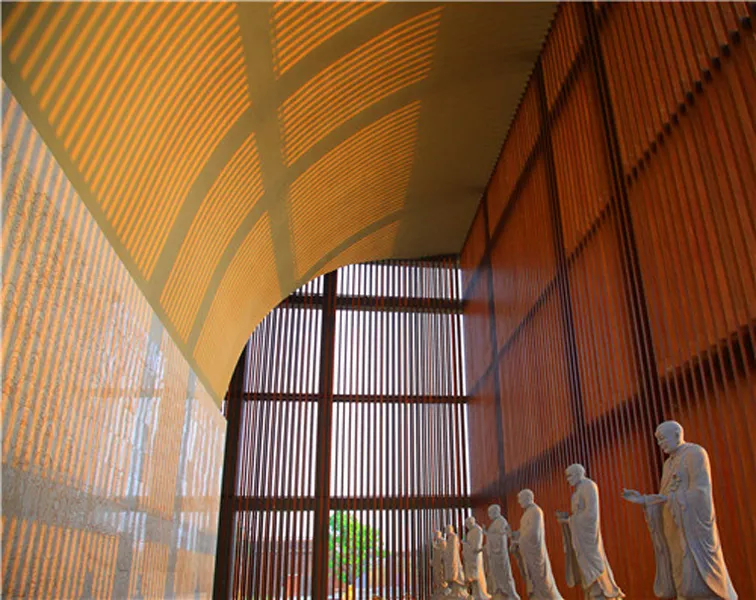
Shuiyue Zen Temple in Suining County
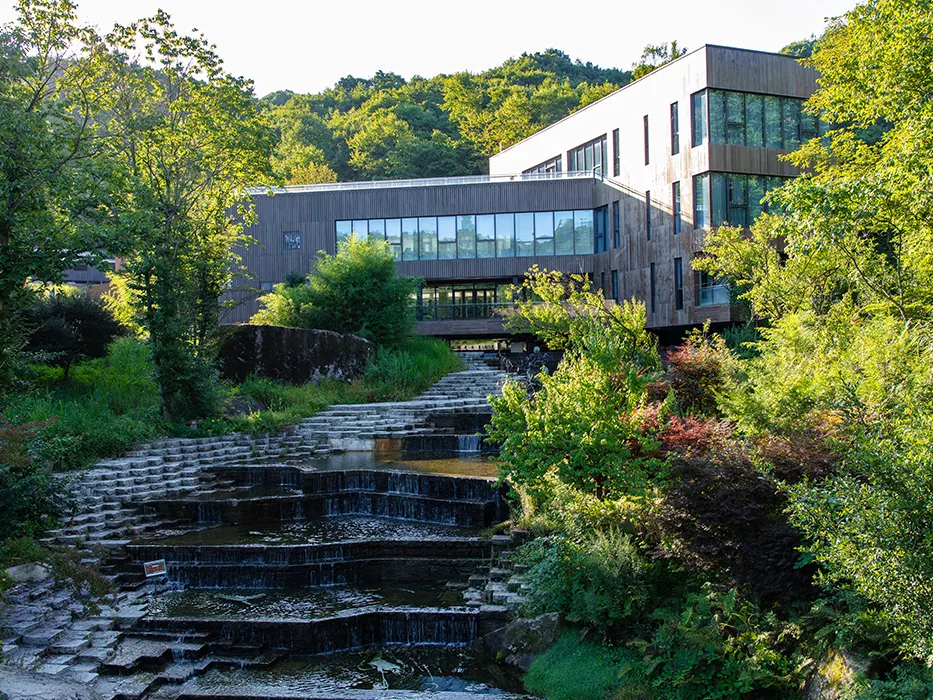
Qinling Youran Mountain Alpine Wetland Landscape Architecture
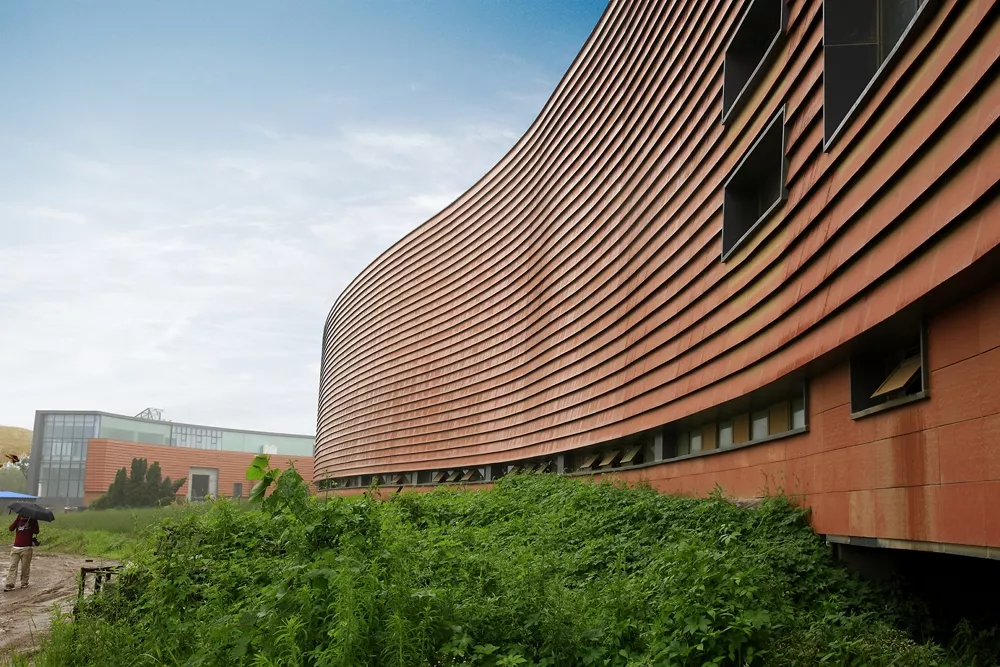
Danyang Tiandi Stone Carving Garden
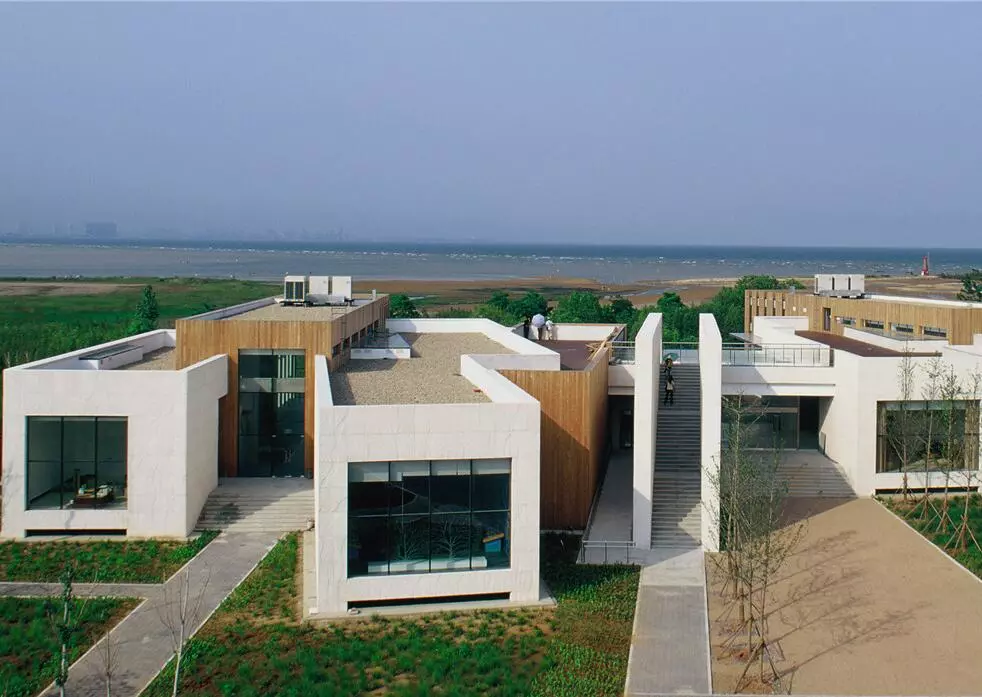
Qinhuangdao Binhai Botanical Garden and Bird Museum
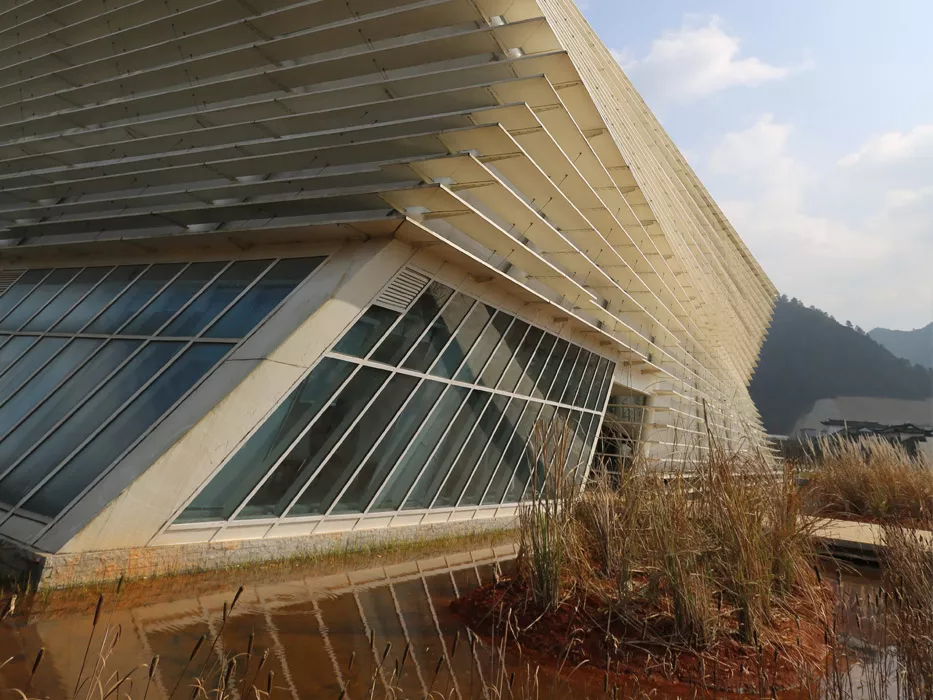
China Xuan Paper Museum
Yu Kongjian's work transcends mere functionalism, achieving a unity of ecology and art. As he defines landscape architecture, "Landscape architecture must return to the art of survival—the design and stewardship of the land." Through these works, we can glimpse a possibility: cities can breathe like sponges, coexist harmoniously with nature, and be both ecological and beautiful.

